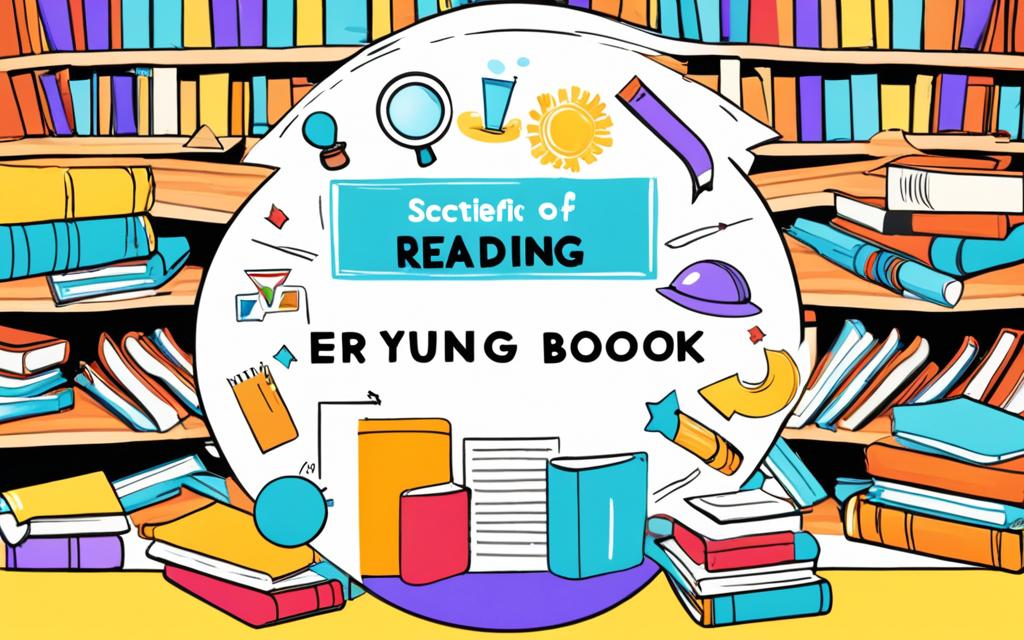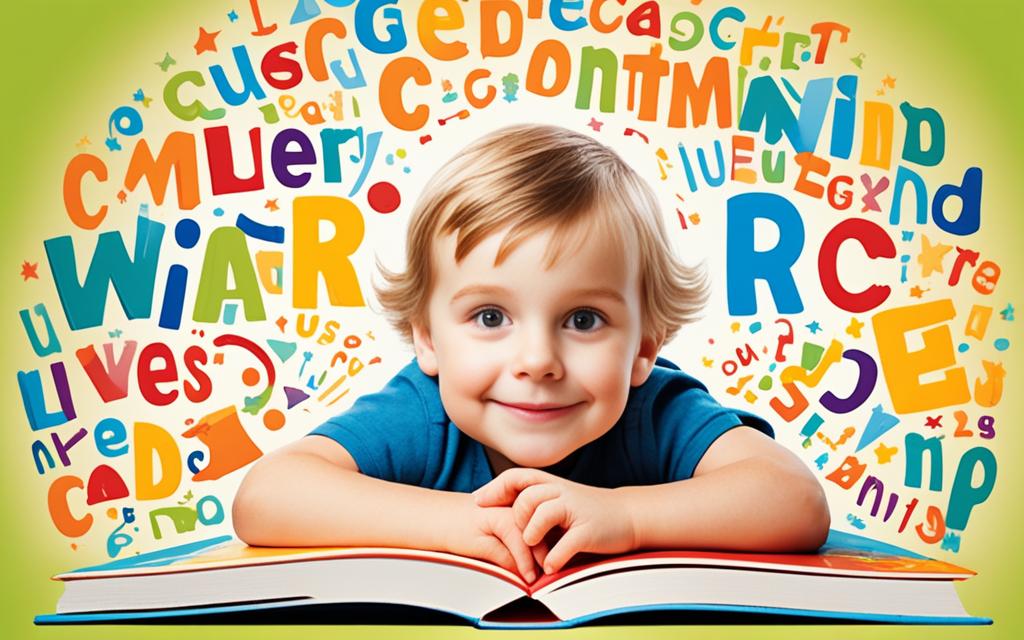As a professional copywriting journalist, I’m excited to share a comprehensive guide on selecting engaging books and effective reading programs tailored for young learners. This article aims to empower parents and educators in fostering early childhood learning and developing essential skills. From understanding the nuances of early literacy development to exploring the wonders of audiobooks, picture books, and nonfiction, we’ll cover a wide range of topics to support young readers on their journey.
Whether your focus is on preschool education, kindergarten readiness, or play-based learning, this guide will equip you with the knowledge and tools to nurture cognitive development, social-emotional learning, and language acquisition. We’ll dive into the science of reading, explore accessible formats for diverse learners, and introduce popular reading programs like the Montessori method and the Reggio Emilia approach.
By the end of this journey, you’ll be empowered to make informed decisions about the best educational toys, classroom activities, and parenting strategies to support your young learners’ literacy skills and cognitive skills. Let’s embark on this adventure together and unlock the full potential of our children’s reading development.
Key Takeaways
- Understand the importance of early literacy development and its impact on child development
- Discover engaging formats like audiobooks, picture books, and nonfiction to foster a love of reading
- Learn about accessible reading options for diverse learners, including digital talking books and enlarged text
- Explore popular early childhood reading programs and their unique approaches to literacy instruction
- Gain strategies to support young learners’ cognitive skills, motor skills, and social-emotional learning
Understanding Early Literacy Development
Developing early literacy skills is crucial for young learners, as it lays the foundation for their future academic success. At the heart of this process are two key components: phonemic awareness and vocabulary development, both of which play a vital role in a child’s language acquisition and cognitive skills.
Phonemic Awareness and Its Importance
Phonemic awareness, the ability to identify and manipulate individual sounds in spoken words, is a crucial early literacy skill. This fundamental understanding of the basic units of language helps children make the connection between the sounds they hear and the letters they see, paving the way for successful reading development. By fostering phonemic awareness, we can empower young learners to become confident, capable readers.
Building Vocabulary and Background Knowledge
Alongside phonemic awareness, building a rich vocabulary and background knowledge is essential for early literacy development. As children expand their word repertoire and make connections between new concepts and their prior experiences, they are better equipped to comprehend and engage with the text they encounter. This holistic approach to language acquisition helps young learners develop the necessary skills to become passionate, motivated readers.
The Science of Reading
The science of reading is a robust body of research that provides invaluable insights into effective reading instruction. At the heart of this approach is the recognition that explicit and systematic phonics instruction plays a pivotal role in helping children decode words and build fluency. By systematically teaching the relationship between letters and sounds, young learners can develop a strong foundation for reading proficiency.
Alongside the focus on phonics instruction, the science of reading also emphasizes the importance of fostering reading comprehension and content knowledge. These higher-order skills enable children to engage with and learn from the text, moving beyond mere decoding to truly understanding and interacting with the information presented. By aligning reading programs and instructional practices with the evidence-based practices highlighted by the science of reading, educators can ensure that young learners receive a comprehensive and robust foundation in literacy development.
| Key Principles of the Science of Reading | Instructional Implications |
|---|---|
| Explicit and Systematic Phonics Instruction | Teach the relationships between letters and sounds in a structured, sequential manner to develop decoding skills and fluency. |
| Promoting Comprehension and Content Knowledge | Emphasize the development of reading comprehension strategies and build background knowledge to support deeper engagement with text. |
| Alignment with Evidence-Based Practices | Ensure that reading programs and instructional approaches are grounded in the latest research on effective literacy instruction. |
By embracing the principles of the science of reading, educators can create a comprehensive literacy curriculum that equips young learners with the necessary skills and knowledge to become confident, engaged, and successful readers.

Accessible Formats for Diverse Learners
For children with print-based reading disabilities, accessible formats provide alternative versions of books that function similarly to print-based texts.
Digital talking books, which combine narration with on-screen text, can help ensure all learners have equitable access to engaging literature. These audiobook-like experiences support diverse learning needs and promote inclusive education, allowing young readers to fully participate in the joy of reading.
Digital Talking Books
Digital talking books are an invaluable resource for children with print-based disabilities. These digital formats seamlessly integrate narration with the corresponding text, providing an accessible and engaging reading experience. By combining the power of audio with the visual element of the text, digital talking books enable young readers to independently access a wide range of literature, fostering their literacy development and love of reading.
Enlarged Text and Electronic Publications
In addition to digital talking books, enlarged text and electronic publications offer alternative accessible formats that cater to the diverse needs of young learners. Enlarged text versions of books, which feature larger font sizes and increased spacing, can help readers with visual impairments or other print-based disabilities engage with the content more comfortably. Similarly, electronic publications, which can be accessed on various digital devices, provide flexibility and ease of use for children who may struggle with traditional print materials.
These accessible formats, powered by advancements in assistive technology, play a crucial role in promoting inclusive education and ensuring that all young readers have the opportunity to discover the magic of books. By embracing universal design for learning principles, educators and parents can create an environment where diverse learners can thrive and develop essential literacy skills.
The Magic of Audiobooks
Audiobooks are a powerful tool for developing listening skills, language development, and overall literacy skills. They allow children to engage with stories and information, even when they may not yet be able to read the text independently. Audiobooks can also be a valuable resource for shared reading experiences, where parents, educators, and children can enjoy books together.
For reluctant readers, audiobooks can provide a gateway to the world of literature, sparking their interest and fostering a love of reading. By immersing themselves in the captivating narratives and expressive read-aloud performances, these young learners can develop a deeper appreciation for the written word and strengthen their literacy skills in a captivating and accessible way.
| Benefits of Audiobooks | Audiobook Listening Tips |
|---|---|
|
|
“Audiobooks have been a game-changer for my reluctant reader. They’ve opened up a whole new world of stories and sparked a love of literature that I never thought possible.”

Engaging with eBooks and Interactive Stories
As the digital landscape continues to evolve, eBooks and interactive stories have emerged as captivating alternatives to traditional print books. These innovative formats offer young learners a unique reading experience that can complement their engagement with physical books.
Tips for Reading Interactive E-Books
Interactive eBooks, which incorporate multimedia elements such as animations, sound effects, and reader-driven prompts, can be a powerful tool for fostering emergent literacy skills. When reading interactive eBooks with children, it’s essential to encourage their active participation, guiding them to explore the various interactive elements and make meaningful connections between the digital content and their own experiences. By incorporating discussion and open-ended questions, parents and educators can help young readers develop critical thinking skills and deepen their understanding of the story.
Pros and Cons of E-Books for Children
While eBooks and interactive stories present exciting opportunities for engaging young readers, they also raise considerations around screen time and the importance of maintaining a balanced approach to reading. On the one hand, eBooks can provide a convenient and accessible way for children to access a wide range of literature, often with additional features that enhance the reading experience. However, excessive screen time can potentially impact a child’s development, and it’s crucial to ensure that digital reading experiences are complemented by physical books and shared reading activities that foster parent-child bonding and social-emotional learning.
By striking a thoughtful balance between digital and traditional reading formats, parents and educators can leverage the unique benefits of eBooks and interactive stories while preserving the essential role of physical books in nurturing a child’s emergent literacy and overall development.
Picture Books: A World of Wonder
Picture books are a powerful medium for sharing rich language, complex imagery, and sophisticated ideas with young readers. These captivating works of art offer a unique opportunity to spark children’s imagination and foster critical thinking skills as they interpret the story through the illustrations.
Wordless Picture Books for Imagination
Wordless picture books, in particular, can be a remarkable tool for cultivating children’s creative thinking and visual literacy. Without the constraints of written text, these books invite young readers to immerse themselves in the visuals, unleashing their imagination and making their own interpretations of the narrative. By engaging with wordless picture books, children develop essential skills in storytelling, problem-solving, and empathy.
Connecting Kids to New Experiences
Picture books also serve as a valuable gateway to diverse perspectives, cultures, and experiences. By exposing children to a wide range of stories and characters, picture books can promote cultural awareness, social-emotional learning, and a deeper understanding of the world around them. This exposure not only broadens children’s horizons but also fosters empathy, compassion, and a greater appreciation for the richness of human diversity.
Nonfiction Books: Fueling Curiosity
Nonfiction books can ignite young learners’ curiosity and help them build essential background knowledge. By introducing children to real people, places, and events, nonfiction literature opens up new worlds and expands their understanding of the world. This informational text can be a powerful tool for engaging reluctant readers, as the compelling, fact-based content can spark their interest and inspire them to explore more.
Building Background Knowledge
When young readers delve into nonfiction books, they have the opportunity to acquire a wealth of content knowledge about diverse topics. From biographies of influential individuals to explorations of fascinating natural phenomena, nonfiction literature broadens children’s perspectives and helps them make meaningful connections to the world around them. This background knowledge serves as a foundation for deeper learning and comprehension, setting them up for academic success.
Turning Reluctant Readers into Motivated Ones
For reluctant readers, nonfiction books can be a gateway to the joys of reading. The engaging, fact-based content can capture their imagination and ignite their curiosity, leading to increased literacy engagement and a newfound motivation to explore more. As children discover the wealth of information and captivating stories within nonfiction, they may develop a stronger appreciation for reading and a desire to continue expanding their content knowledge.

Graphic Novels: A Visual Storytelling Experience
Graphic novels, which combine words and images to tell stories, offer a unique and engaging reading experience for young learners. This visually captivating format can foster critical reading skills as children navigate the interplay between text and visuals, analyzing how the two elements work together to convey meaning and develop multiliteracies.
Fostering Critical Reading Skills
The intricate interplay of words and illustrations in graphic novels encourages children to think critically and deeply about the narrative. As they read, young learners must actively interpret the relationship between the text and the accompanying visual literacy, developing the ability to extract meaning from the integration of these elements. This process challenges them to consider multiple perspectives, make inferences, and engage in higher-order thinking – all essential skills for becoming proficient, engaged readers.
Engaging Reluctant Readers
Graphic novels can be particularly effective in reaching reluctant readers, as the combination of text and dynamic illustrations can make the reading process more accessible and enjoyable. The alternative formats and compelling visuals can captivate young minds, fostering a sense of reading engagement and a love for literature that might not have been there before. By embracing graphic novels as part of a diverse literary diet, educators and parents can help cultivate a new generation of motivated, confident readers.
Ultimately, graphic novels offer a unique and powerful way to introduce young learners to the joy of reading. By leveraging the power of visual storytelling, this format can nurture critical thinking, multiliteracies, and a lifelong passion for the written word.
Poetry: Playing with Words
Poetry, with its emphasis on rhythm, rhyme, and the playful use of language, can be a delightful way to build young learners’ reading skills and boost their enthusiasm for literature. Exploring the musical qualities of poetry helps children develop phonemic awareness, vocabulary, and an appreciation for the expressive power of words.
Exploring Rhythm and Rhyme
The rhythmic and rhyming nature of poetry encourages children to engage with language on a deeper level. As they listen to the cadence and melodic patterns, young learners begin to understand how words can be manipulated to create a sense of musicality. This exposure to rhythm and rhyme lays the foundation for developing phonemic awareness, a crucial skill for early literacy development.
Through the playful exploration of word play, children can also expand their vocabulary and discover the joys of creative expression. Poetry’s emphasis on vivid imagery and unique perspectives can stimulate their language development and foster a love of reading.
National Poetry Month Resources
To celebrate the power of poetry and engage young learners, the month of April is designated as National Poetry Month. This annual celebration provides a wealth of resources and activities to bring the art of poetry to life in classrooms and homes. From recitation contests and poetry slams to author visits and collaborative writing projects, these initiatives help reading engagement by sparking children’s curiosity and nurturing their appreciation for the written word.

By embracing the rhythmic and rhyming qualities of poetry, educators and parents can cultivate young learners’ language development and foster a lifelong love of reading. National Poetry Month offers a prime opportunity to explore the enchanting world of verse and ignite children’s passion for the power of words.
High/Low Books for Struggling Readers
For young learners who struggle with reading, high-interest, low-reading-level (high/low) books can be a valuable resource. These engaging, age-appropriate books are tailored to the reader’s skill level, helping to build their confidence, fluency, and vocabulary development. By providing access to content that matches their interests, high/low books can motivate reluctant readers and foster a love of reading.
Motivating with High-Interest Topics
One of the key benefits of high/low books is their ability to tap into the interests of struggling readers. These books often feature topics that are exciting and relevant to the reader, such as sports, adventure, or popular culture. By capturing their attention with high-interest content, high/low books can inspire reluctant readers to engage with the text and persist through the reading process.
Building Reading Fluency and Vocabulary
In addition to sparking motivation, high/low books also support the development of essential literacy skills. The accessible reading level allows struggling readers to practice fluency, while the carefully curated vocabulary helps them build their word knowledge. As these readers gain confidence and experience success, they are more likely to continue exploring books and developing their literacy abilities.
Ultimately, high/low books create a pathway for inclusive education, ensuring that all young learners have the opportunity to engage with engaging literature and develop the necessary skills to become confident, motivated readers.

Early Childhood Learning: Popular Reading Programs
Several popular reading programs offer structured, evidence-based approaches to help young learners develop essential literacy skills. These programs cater to the diverse needs of early childhood learning, providing a range of instructional methods, from systematic phonics-based instruction to comprehensive digital learning and interactive games.
“Teach Your Child to Read in 100 Easy Lessons”
The “Teach Your Child to Read in 100 Easy Lessons” program offers a structured, phonics-based approach for parents to use at home. This systematic method guides children through the fundamentals of reading, helping them develop essential skills, such as phonemic awareness and word recognition.
“Reading Eggs” and Its Comprehensive Approach
“Reading Eggs” is a comprehensive digital learning program that addresses all aspects of reading, including phonemic awareness, phonics, vocabulary, and comprehension. The interactive, multi-sensory instruction within this program supports early childhood learning and helps young readers develop a strong foundation in literacy.
“Teach Your Monster to Read” Games
The “Teach Your Monster to Read” platform offers a free, game-based approach to supporting early literacy development. Through engaging, interactive activities, children can build essential skills, such as letter recognition, blending, and reading fluency, in a fun and motivating environment.
“Hooked on Phonics” and Its Phonics-Based Method
“Hooked on Phonics” combines physical and digital materials to deliver a phonics-focused curriculum. This program emphasizes explicit, systematic instruction in phonics, helping young learners develop the foundational skills necessary for comprehensive literacy. The multi-modal approach of “Hooked on Phonics” caters to diverse learning styles and supports early childhood learning.
Conclusion
As we’ve explored in this comprehensive guide, supporting young learners on their reading journey requires a multifaceted approach that encompasses a wide range of strategies, resources, and popular reading programs. By understanding the importance of early literacy development, we can foster the essential skills that children need to become confident, motivated readers.
From discovering the magic of audiobooks and the wonder of picture books to embracing the power of graphic novels and the richness of nonfiction, this article has provided a wealth of information to help parents and educators cultivate a love of reading in young learners. By embracing a variety of multimodal reading experiences and aligning with the science of reading, we can empower the next generation to develop the literacy skills they need to thrive.
Ultimately, our goal is to create an engaging, accessible, and inclusive learning environment that supports the diverse needs of young readers. By fostering parent-child engagement and providing a range of educational resources, we can ensure that all children have the opportunity to unlock the joy and wonder of reading.
FAQ
What is the importance of phonemic awareness in early literacy development?
How do vocabulary and background knowledge contribute to early literacy skills?
What are the key principles of the science of reading?
How can accessible formats support diverse learners?
What are the benefits of using audiobooks for young learners?
What are the considerations when using e-books with young children?
How can picture books support young learners’ development?
What are the benefits of nonfiction books for young readers?
How can graphic novels support literacy development?
How can poetry contribute to early literacy skills?
What are the benefits of high/low books for struggling readers?
What are some popular early childhood reading programs?
Source Links
- https://www.weareteachers.com/science-of-reading-curriculum/
- https://www.readingrockets.org/books-and-authors/choosing-and-using-kids-books
- https://teachyourchildtoread.com/five-best-programs-to-teach-your-child-to-read/

